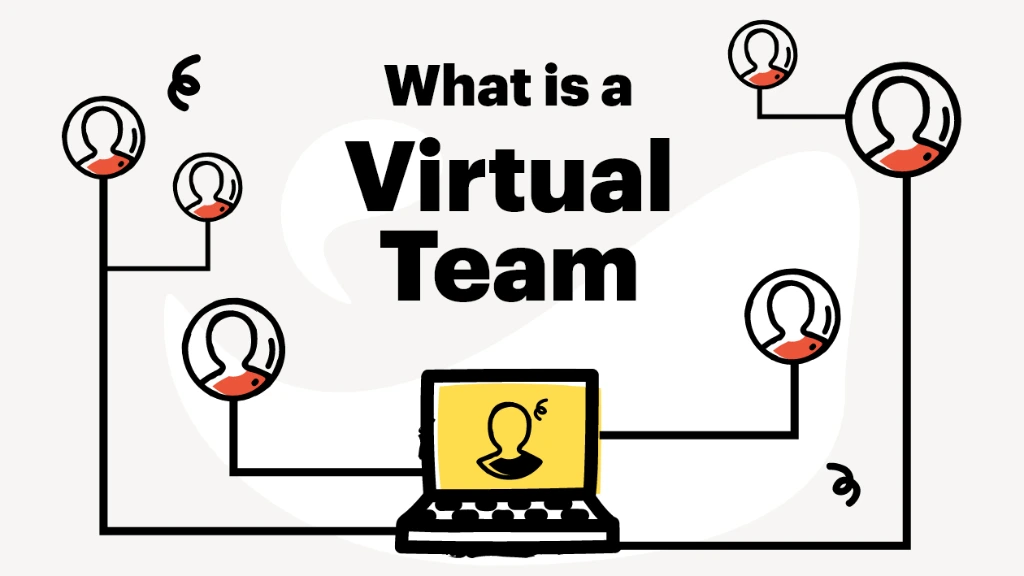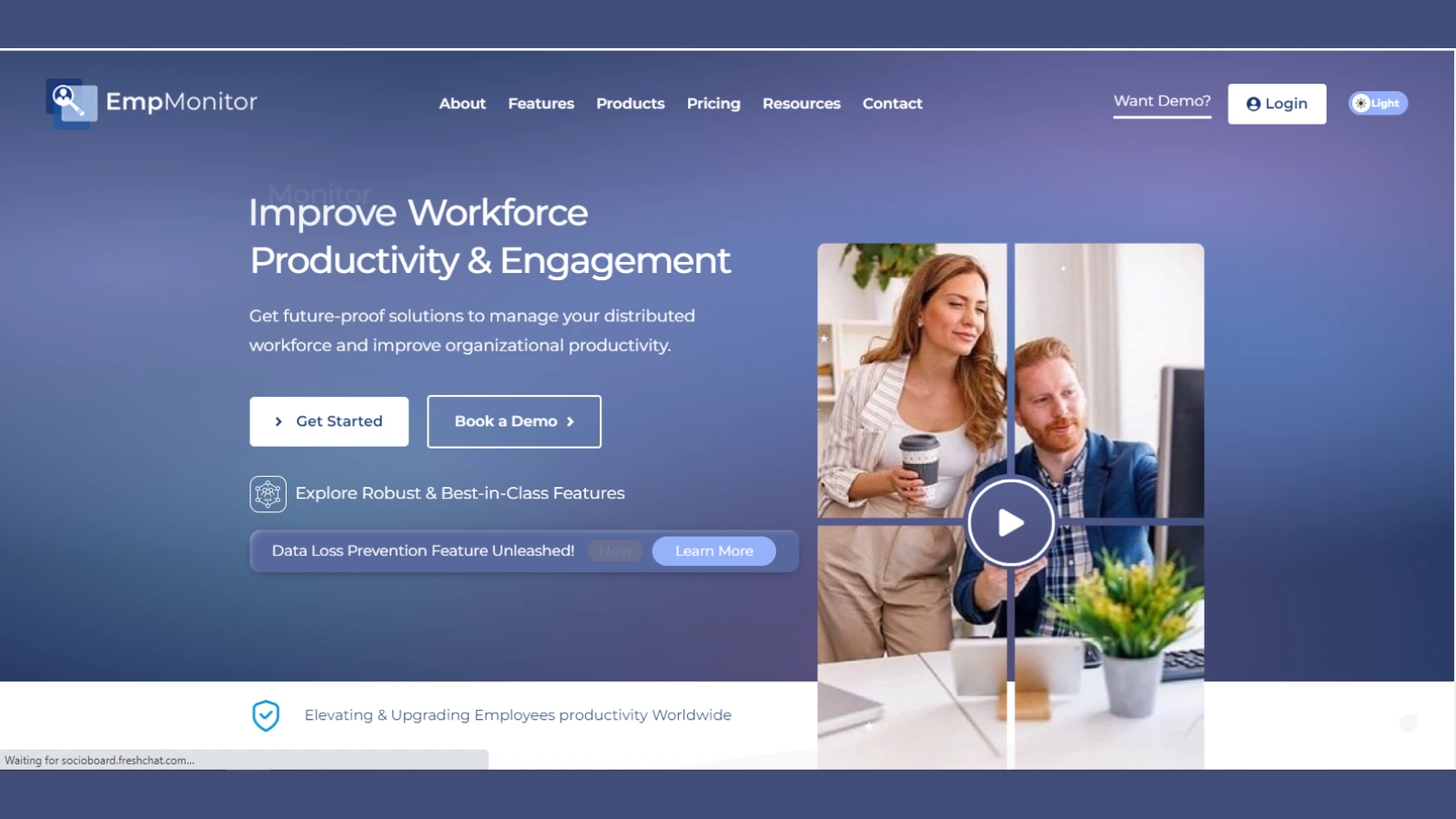The prevalence of virtual teams in today’s workforce is a testament to the ever-evolving landscape of modern business.
Virtual teams have become a fundamental part of the contemporary workplace as technology advances and redefines the way we work. With progress in communication tools, remote work, and recognition of their potential, this transformation is taking place.
In this blog, we embark on a journey to examine the complexities of managing virtual teams. We will start by defining what virtual teams are and then dive into the benefits they bring to organizations.
It doesn’t matter if you’re a seasoned manager or a virtual team newbie, we’ve got you covered with our 10 essential tips for effectively overseeing these dynamic teams.
Join us as we navigate the landscape of virtual teams, shedding light on their significance and providing you with the insights and guidance needed to excel in this ever-evolving work culture.
Listen To The Podcast Now!
What Is A Virtual Team?
Virtual teams, also known as remote teams or distributed teams, are groups of individuals who collaborate and work together from different geographical locations, often spread across different time zones. These teams rely heavily on technology and digital tools to communicate, coordinate tasks, and achieve their shared goals.
Virtual teams can take various forms, such as:
- Telecommuting Teams: Team members work from their homes or remote locations, away from the main office.
- Global Teams: From different countries or continents people can join in the team to start working on a global scale.
- Hybrid Teams: A combination of both in-office and remote workers, creating a hybrid work model environment.
- Project-Based Teams: Team members come together for specific projects and disband once the project is completed.
- Cross-Functional Teams: Teams composed of individuals from different departments or areas of expertise.
Benefits of Managing Virtual Teams
Managing virtual teams offers numerous benefits for both employers and employees. Let’s explore some of the advantages of embracing this flexible work model.
- Access to a Global Talent Pool: By virtual team management, you can tap into a diverse and global talent pool. This allows you to find the best fit for your projects and access specialized skills that may not be available locally.
- Cost Savings: Virtual teams can significantly reduce overhead costs associated with maintaining a physical office space, including rent, utilities, and office supplies. Additionally, remote workers often use their equipment, saving the company on technology expenses.
- Increased Productivity: Many employees report increased productivity when working remotely, thanks to reduced office distractions and a more comfortable work environment tailored to their preferences.
- Better Work-Life Balance: Virtual teams provide employees with the flexibility to balance their work and personal lives. This leads to greater job satisfaction and improved morale.
- Environmental Benefits: Fewer employees commuting to the office means reduced traffic congestion and a smaller carbon footprint. Managing virtual teams can contribute to a more sustainable and environmentally friendly business.
- Enhanced Employee Retention: Employees often value the flexibility and autonomy that virtual teams offer, leading to higher retention rates. Satisfied employees are more likely to stay with a company for the long term.
- Business Continuity: In times of crisis, such as natural disasters or public health emergencies, virtual teams can ensure that your business continues to operate without major disruptions. This provides an added layer of resilience.
- Increased Diversity and Inclusion: Virtual teams can promote diversity and inclusion by removing geographical barriers and allowing people from different backgrounds and regions to collaborate seamlessly.
- Reduced Commuting Stress: Eliminating daily commutes can significantly reduce stress and improve the well-being of your employees. Less time spent on the road or in public transport means more time for personal activities.
- 24/7 Operations: With team members in different time zones, virtual teams can provide round-the-clock support or service, ensuring that your business is always available to customers.
Also Read
05 SMART WAYS TO KEEP UP YOUR BALANCE WITH LIFE AND WORK
REMOTE TEAM MANAGEMENT: TIPS FOR LEADING A DISTRIBUTED WORKFORCE
10 Tips for Managing Virtual Teams
While managing virtual teams comes with a host of benefits, it also presents unique challenges. To ensure the success of your virtual team, follow these 10 essential tips:
Set Clear Expectations and Goals
Define clear objectives, expectations, and key performance indicators for each team member. Ensure that everyone understands their role and responsibilities within the team. This clarity is crucial for effective virtual collaboration.
Establish Effective Communication
Effective communication is the backbone of virtual teams. Use a combination of communication tools, such as video conferencing, instant messaging, and project management software, to facilitate regular interactions. Encourage team members to provide updates and seek help when needed.
Leverage Tools
Invest in a reliable and up-to-date workforce management solution for effective virtual team management. Having such workforce management tools are essential for seamless remote work. Among the tools that can significantly help you in improving the management of virtual teams is EmpMonitor.
EmpMonitor is a comprehensive employee monitoring software that can be a valuable addition for managing virtual teams. Here are some of how EmpMonitor can benefit your virtual team:
- Time Tracking: EmpMonitor enables you to track the time your team members spend on various tasks. This not only helps in monitoring their productivity but also assists in accurate time management and task allocation.
- Activity Monitoring: The software provides insights into the applications and websites your team members are using during work hours. It helps you identify any potential distractions and encourages a more focused work environment.
- Screenshots and Keystroke Logging: EmpMonitor captures screenshots and records keystrokes, allowing you to gain a deeper understanding of how your team is working. This feature can be useful for training, quality control, and compliance purposes.
- Project Management: It can assist in project management by tracking the progress of tasks and projects, making it easier to allocate resources and meet deadlines.
- Security and Data Protection: It also enhances security by preventing data breaches and unauthorized access to sensitive information. This is especially crucial when dealing with remote teams that may have varying levels of cybersecurity awareness.
Investing in tools like EmpMonitor for remote workforce management, along with other essential tools, will help you create a more efficient and productive virtual team, ensuring that they have the resources they need to succeed in their remote work environment. This will help you a lot in managing virtual teams.
Encourage Remote Team Building Activities
Team building activities help strengthen the bonds among virtual team members. Organize virtual team-building exercises, such as online games, video conferences, or virtual happy hours, to foster a sense of unity and camaraderie.
Respect Time Zones and Schedules
Virtual teams often span different time zones. Be mindful of these differences when scheduling meetings and setting deadlines. Use scheduling tools that show multiple time zones to avoid confusion.
Provide Ongoing Feedback
Regular feedback is vital for employee growth and development. Schedule one-on-one meetings with team members to discuss their performance, address concerns, and provide constructive feedback.
Trust Your Team
Trust is a fundamental aspect of managing virtual teams. Trust your team to deliver their work and meet deadlines. Micromanagement can hinder productivity and damage team morale.
Offer Professional Development Opportunities
Invest in the professional development of your virtual team members. Provide access to online courses, webinars, and resources that can help them enhance their skills and stay motivated.
Document Processes and Procedures
Documenting processes and procedures is crucial for maintaining consistency in your virtual team’s work. Create a central repository for guidelines, best practices, and resources to help team members perform their tasks effectively.
Evaluate and Adjust Regularly
Periodically review the performance of your virtual team and the effectiveness of your management approach. Be open to making adjustments and improvements based on feedback and changing circumstances.
Conclusion
Managing virtual teams is a strategic choice that offers numerous benefits to both employers and employees.
Access to a global talent pool, cost savings, increased productivity, and improved work-life balance are just a few of the advantages that come after team building for remote workers.
However, it’s essential to navigate the challenges by setting clear expectations, fostering effective communication, and providing opportunities for professional growth.
By following the virtual team building ideas outlined in this blog, you can successfully manage virtual teams and create a collaborative and productive remote work environment. With the right approach and commitment, virtual teams can contribute significantly to the success and sustainability of your business in the modern world of work.
Embrace the future of work, and reap the benefits of managing virtual teams.














